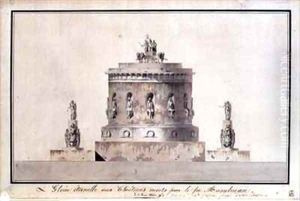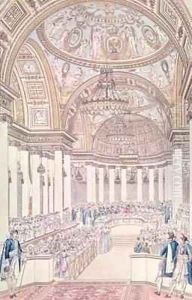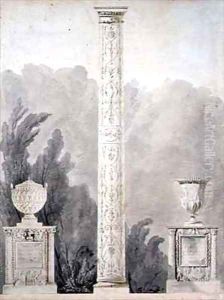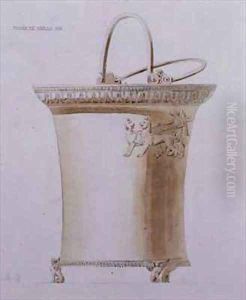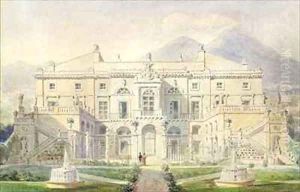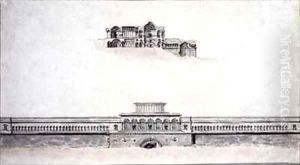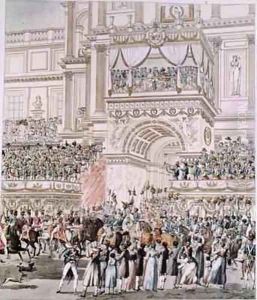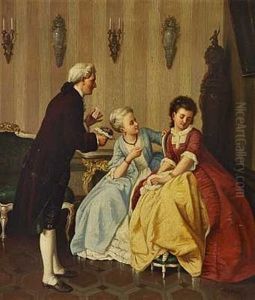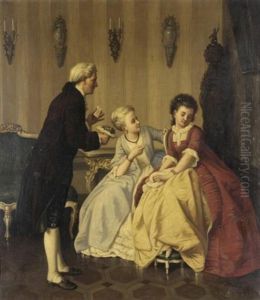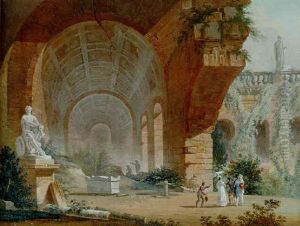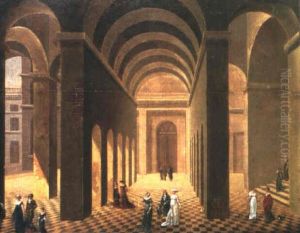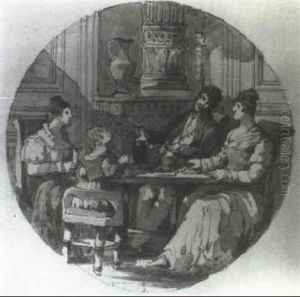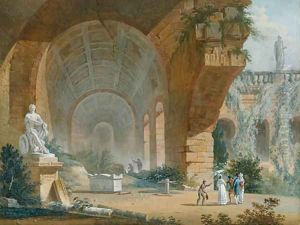Pierre Francois Leonard Fontaine Paintings
Pierre François Léonard Fontaine was a prominent French architect during the late 18th and early 19th centuries. He was born on September 20, 1762, in Pontoise, near Paris, France. Fontaine was primarily known for his collaboration with his partner Charles Percier. Together, Percier and Fontaine are credited with creating the Empire style of architecture, which is characterized by its use of elements of the Roman Empire and its grandiose aesthetic.
Fontaine trained at the French Academy in Rome, where he met Percier. After returning to Paris, the architects found favor with Napoleon Bonaparte, who was then First Consul of France. They became the official government architects and were responsible for the redesign of several Parisian landmarks. Their most notable works include the interior design of the Château de Malmaison, the residence of Napoleon and his first wife Josephine, and the Arc de Triomphe du Carrousel, which stands in the courtyard of the Louvre Palace.
The partnership between Percier and Fontaine extended beyond individual buildings to include the planning of festivals and the design of furniture and objects. Their publication, 'Recueil de décorations intérieures' (Collection of Interior Decorations), had a significant influence on interior design in France and beyond.
Fontaine’s career continued after the fall of Napoleon. He worked on projects such as the completion of the Rue de Rivoli and the restoration of the Palais-Royal. Despite the political changes in France, Fontaine managed to maintain his position and influence throughout the Bourbon Restoration and into the reign of King Louis-Philippe.
Pierre François Léonard Fontaine died on October 10, 1853, in Paris. His legacy is preserved in the many structures he helped design and through his influence on the Empire style, which continued to be popular throughout the 19th century, especially in Europe and the Americas.
